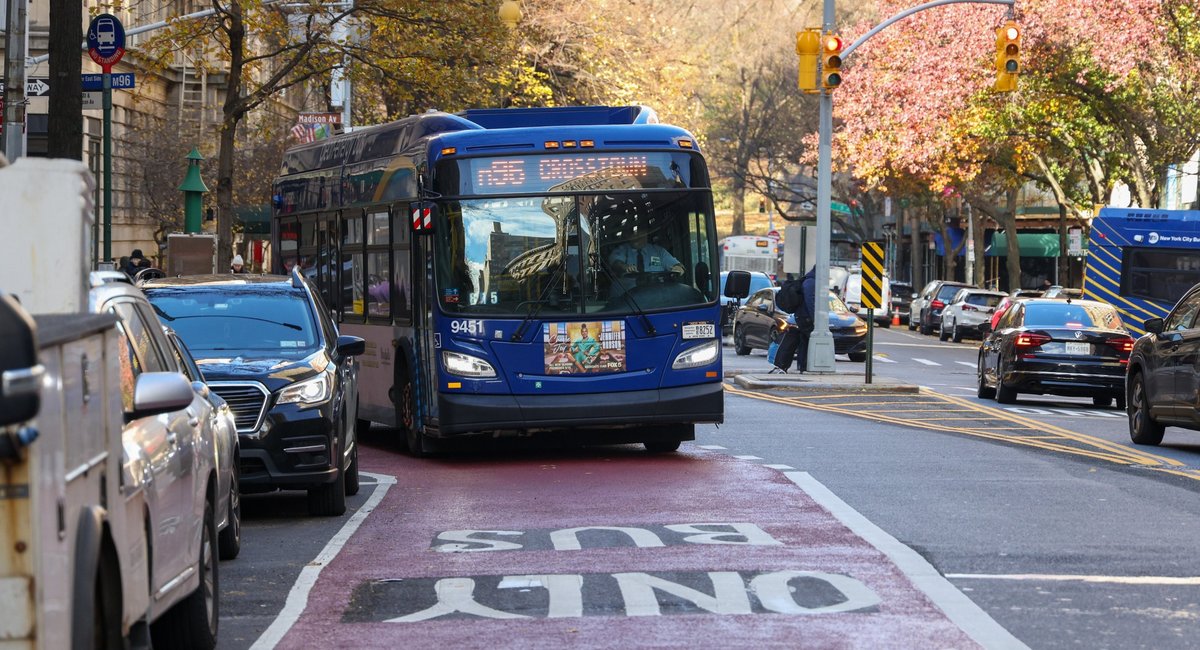New bus lanes and pedestrian safety upgrades are now in effect on Manhattan’s 96th Street, city transportation officials said on Tuesday.
The redesign is one of 37 projects the Department of Transportation is implementing ahead of congestion pricing, which is scheduled to launch in January.
The changes span 96th Street from Second Avenue to West End Avenue, aimed at improving conditions for the majority of residents who depend on public transit. Nearly 75% of residents along the corridor do not own cars, and 68% commute by walking, biking or using public transit.
As one of the city’s busiest crosstown routes, 96th Street connects Manhattan’s East and West Sides, serving tens of thousands of commuters weekly. The M96 and M106 buses, which carry thousands of riders across the city, are among its key transit routes.
“96th Street is one of the city’s busiest crosstown routes, where bus speeds during rush hours can be as slow as walking. The addition of dedicated bus lanes will dramatically enhance service for the 15,500 weekday riders who depend on this corridor, making their commutes faster, safer, and more reliable,” Transportation Commissioner Ydanis Rodriguez said in a statement.
The new bus lanes run in both directions between West End Avenue and Central Park West, and from Madison Avenue to Second Avenue. These lanes are designed to reduce delays by separating buses from general traffic, improving travel times, officials said.
The bus lanes will operate 24/7, except for the eastbound curbside lane between Lexington and Third Avenues, which will be active from 6 a.m. to 8 p.m. daily. Stop times for the M96 and M106 buses have also been extended.
Other updates include Neighborhood Loading Zones between Amsterdam Avenue and Central Park West, reserving space for deliveries, as well as left-turn bays and hardened center lines at intersections to enhance pedestrian safety.
“Simply put: when you prioritize walkers and micro mobility and mass transit, more people…
Read the full article here

Leave a Reply